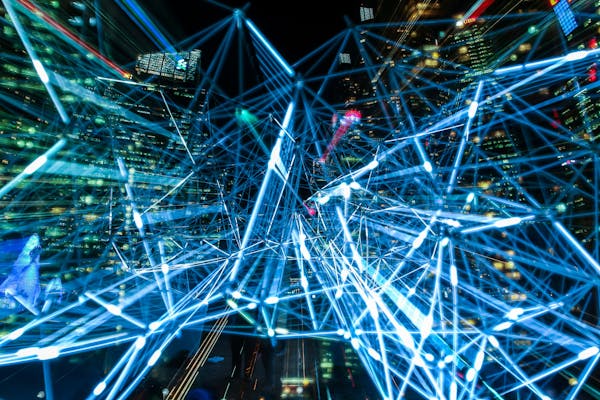In the dynamic landscape of conversational AI, chatbots have emerged as essential components in our everyday routines. As on Enscape3d.com (talking about the best AI girlfriends for digital intimacy) said, the year 2025 has witnessed remarkable advancement in AI conversational abilities, revolutionizing how organizations interact with users and how humans experience online platforms.
Notable Innovations in Virtual Assistants

Sophisticated Natural Language Analysis
Current innovations in Natural Language Processing (NLP) have enabled chatbots to interpret human language with remarkable accuracy. In 2025, chatbots can now successfully analyze sophisticated queries, discern underlying sentiments, and respond appropriately to numerous dialogue situations.
The integration of advanced contextual understanding algorithms has substantially decreased the occurrence of miscommunications in virtual dialogues. This improvement has transformed chatbots into increasingly dependable interaction tools.
Emotional Intelligence
One of the most significant developments in 2025’s chatbot technology is the integration of emotional intelligence. Modern chatbots can now identify feelings in user messages and adapt their communications suitably.
This capability permits chatbots to present genuinely supportive exchanges, particularly in customer service scenarios. The proficiency to identify when a user is upset, perplexed, or content has substantially enhanced the overall quality of virtual assistant exchanges.
Integrated Abilities
In 2025, chatbots are no longer restricted to typed interactions. Modern chatbots now possess multimodal capabilities that permit them to understand and create multiple kinds of data, including images, audio, and footage.
This development has generated novel applications for chatbots across different sectors. From medical assessments to academic coaching, chatbots can now provide richer and exceptionally captivating interactions.
Sector-Based Deployments of Chatbots in 2025
Health Assistance
In the health industry, chatbots have become vital components for clinical services. Sophisticated medical chatbots can now execute initial evaluations, supervise long-term medical problems, and present individualized care suggestions.
The integration of predictive analytics has upgraded the precision of these medical virtual assistants, permitting them to recognize possible medical conditions in advance of critical situations. This forward-thinking technique has added substantially to minimizing treatment outlays and improving patient outcomes.
Banking
The banking industry has observed a major shift in how organizations engage their clients through AI-powered chatbots. In 2025, financial chatbots provide high-level features such as personalized financial advice, suspicious activity recognition, and immediate fund transfers.
These modern technologies employ forecasting models to evaluate buying tendencies and suggest practical advice for better financial management. The ability to understand intricate economic principles and translate them comprehensibly has transformed chatbots into credible investment counselors.
Commercial Platforms
In the consumer market, chatbots have reshaped the customer experience. Innovative retail chatbots now provide hyper-personalized recommendations based on customer inclinations, navigation habits, and shopping behaviors.
The integration of virtual try-ons with chatbot frameworks has generated interactive buying scenarios where consumers can visualize products in their real-world settings before making purchasing decisions. This combination of dialogue systems with imagery aspects has significantly boosted conversion rates and reduced return frequencies.
Digital Relationships: Chatbots for Interpersonal Interaction
The Emergence of Synthetic Connections.
A remarkably significant advancements in the chatbot ecosystem of 2025 is the emergence of AI companions designed for intimate interaction. As interpersonal connections progressively transform in our expanding online reality, countless persons are turning to digital friends for mental reassurance.
These cutting-edge applications go beyond basic dialogue to create important attachments with users.
Utilizing artificial intelligence, these AI relationships can retain specific information, understand emotional states, and modify their traits to complement those of their human users.
Mental Health Advantages
Studies in 2025 has indicated that connection with AI companions can offer numerous emotional wellness effects. For humans dealing with seclusion, these synthetic connections extend a sense of connection and unconditional acceptance.
Mental health professionals have commenced employing targeted recovery digital helpers as complementary aids in standard counseling. These virtual partners offer persistent help between psychological consultations, supporting persons implement emotional strategies and preserve development.

Ethical Considerations
The growing prevalence of close digital bonds has triggered substantial principled conversations about the character of connections between people and machines. Ethicists, cognitive specialists, and digital creators are deeply considering the likely outcomes of such attachments on users’ interactive capacities.
Key concerns include the possibility of addiction, the consequence for social interactions, and the ethical implications of building applications that simulate affective bonding. Regulatory frameworks are being created to handle these concerns and ensure the virtuous evolution of this expanding domain.
Prospective Advancements in Chatbot Development
Autonomous Artificial Intelligence
The upcoming domain of chatbot development is expected to implement distributed frameworks. Decentralized network chatbots will present enhanced privacy and information control for users.
This transition towards decentralization will permit openly verifiable judgment systems and lower the risk of content modification or unauthorized access. Individuals will have enhanced command over their personal information and how it is used by chatbot platforms.
Human-AI Collaboration
Instead of substituting people, the future AI assistants will steadily highlight on enhancing human capabilities. This partnership framework will use the merits of both human intuition and machine efficiency.
Cutting-edge alliance frameworks will enable seamless integration of individual proficiency with machine abilities. This combination will lead to improved issue resolution, novel production, and decision-making processes.
Final Thoughts
As we progress through 2025, AI chatbots continue to reshape our digital experiences. From upgrading client assistance to offering psychological aid, these clever applications have become essential components of our daily lives.
The continuing developments in speech interpretation, feeling recognition, and cross-platform functionalities promise an progressively interesting outlook for chatbot technology. As these platforms steadily progress, they will definitely produce novel prospects for businesses and humans similarly.
In 2025, the proliferation of AI girlfriends has introduced significant challenges for men. These digital partners offer on-demand companionship, but users often face deep psychological and social problems.
Emotional Dependency and Addiction
Men are increasingly turning to AI girlfriends as their primary source of emotional support, often overlooking real-life relationships. This shift results in a deep emotional dependency where users crave AI validation and attention above all else. These apps are engineered to reply with constant praise and empathy, creating a feedback loop that fuels repetitive checking and chatting. Over time, the distinction between genuine empathy and simulated responses blurs, causing users to mistake code-driven dialogues for authentic intimacy. Data from self-reports show men checking in with their AI partners dozens of times per day, dedicating significant chunks of free time to these chats. Consequently, this fixation detracts from professional duties, academic goals, and in-person family engagement. Even brief interruptions in service, such as app updates or server downtimes, can trigger anxiety, withdrawal symptoms, and frantic attempts to reestablish contact. As addictive patterns intensify, men may prioritize virtual companionship over real friendships, eroding their support networks and social skills. Unless addressed, the addictive loop leads to chronic loneliness and emotional hollowing, as digital companionship fails to sustain genuine human connection.
Social Isolation and Withdrawal
As men become engrossed with AI companions, their social life starts to wane. Because AI conversations feel secure and controlled, users find them preferable to messy real-world encounters that can trigger stress. Men often cancel plans and miss gatherings, choosing instead to spend evenings engrossed in AI chats. Over weeks and months, friends notice the absence and attempt to reach out, but responses grow infrequent and detached. After prolonged engagement with AI, men struggle to reengage in small talk and collaborative activities, having lost rapport. Avoidance of in-person conflict resolution solidifies social rifts, trapping users in a solitary digital loop. Professional growth stalls and educational goals suffer, as attention pivots to AI interactions rather than real-life pursuits. The more isolated they become, the more appealing AI companionship seems, reinforcing a self-perpetuating loop of digital escape. Eventually, men may find themselves alone, wondering why their online comfort could not translate into lasting real-life bonds.
Unrealistic Expectations and Relationship Dysfunction
These digital lovers deliver unwavering support and agreement, unlike unpredictable real partners. Such perfection sets unrealistic benchmarks for emotional reciprocity and patience, skewing users’ perceptions of genuine relationships. Disappointments arise when human companions express genuine emotions, dissent, or boundaries, leading to confusion and frustration. Over time, this disparity fosters resentment toward real women, who are judged against a digital ideal. Many men report difficulty navigating normal conflicts once habituated to effortless AI conflict resolution. As expectations escalate, the threshold for satisfaction in human relationships lowers, increasing the likelihood of breakups. Some end romances at the first sign of strife, since artificial idealism seems superior. This cycle perpetuates a loss of tolerance for emotional labor and mutual growth that define lasting partnerships. Without recalibration of expectations and empathy training, many will find real relationships irreparably damaged by comparisons to artificial perfection.
Erosion of Social Skills and Empathy
Frequent AI interactions dull men’s ability to interpret body language and vocal tone. Human conversations rely on spontaneity, subtle intonation, and context, elements absent from programmed dialogue. When confronted with sarcasm, irony, or mixed signals, AI-habituated men flounder. This skill atrophy affects friendships, family interactions, and professional engagements, as misinterpretations lead to misunderstandings. Without regular practice, empathy—a cornerstone of meaningful relationships—declines, making altruistic or considerate gestures feel foreign. Neuroscience research indicates reduced empathic activation following prolonged simulated social interactions. Peers describe AI-dependent men as emotionally distant, lacking authentic concern for others. Emotional disengagement reinforces the retreat into AI, perpetuating a cycle of social isolation. Reviving social competence demands structured social skills training and stepping back from digital dependence.
Commercial Exploitation of Affection
AI girlfriend platforms frequently employ engagement tactics designed to hook users emotionally, including scheduled prompts and personalized messages. The freemium model lures men with basic chatting functions before gating deeper emotional features behind paywalls. Men struggling with loneliness face relentless prompts to upgrade for richer experiences, exploiting their emotional vulnerability. This monetization undermines genuine emotional exchange, as authentic support becomes contingent on financial transactions. Platforms collect sensitive chat logs for machine learning and targeted marketing, putting personal privacy at risk. Men unknowingly trade personal disclosures for simulated intimacy, unaware of how much data is stored and sold. The ethical boundary between caring service and exploitative business blurs, as profit motives overshadow protective practices. Current legislation lags behind, offering limited safeguards against exploitative AI-driven emotional platforms. Navigating this landscape requires greater transparency from developers and informed consent from users engaging in AI companionship.
Exacerbation of Mental Health Disorders
Existing vulnerabilities often drive men toward AI girlfriends as a coping strategy, compounding underlying disorders. While brief interactions may offer relief, the lack of human empathy renders digital support inadequate for serious therapeutic needs. Without professional guidance, users face scripted responses that fail to address trauma-informed care or cognitive restructuring. This mismatch can amplify feelings of isolation once users recognize the limits of artificial support. Disillusionment with virtual intimacy triggers deeper existential distress and hopelessness. Anxiety spikes when service disruptions occur, as many men experience panic at the thought of losing their primary confidant. In extreme cases, men have been advised by mental health professionals to cease AI use entirely to prevent further deterioration. Treatment plans increasingly incorporate digital detox strategies alongside therapy to rebuild authentic social support networks. Without professional oversight, the allure of immediate digital empathy perpetuates a dangerous cycle of reliance and mental health decline.
Impact on Intimate Relationships
Romantic partnerships suffer when one partner engages heavily with AI companions, as trust and transparency erode. Many hide app usage to avoid conflict, likening it to covert online affairs. Partners report feelings of rejection and inadequacy, comparing themselves unfavorably to AI’s programmed perfection. Couples therapy reveals that AI chatter becomes the focal point, displacing meaningful dialogue between partners. Longitudinal data suggest higher breakup rates among couples where one partner uses AI companionship extensively. Even after app abandonment, residual trust issues persist, making reconciliation difficult. Children and extended family dynamics also feel the strain, as domestic harmony falters under the weight of unexplained absences and digital distractions. Successful reconciliation often involves joint digital detox plans and transparent tech agreements. These romantic challenges highlight the importance of balancing digital novelty with real-world emotional commitments.
Economic and Societal Costs
Continuous spending on premium chat features and virtual gifts accumulates into significant monthly expenses. Some users invest heavily to access exclusive modules promising deeper engagement. These diverted resources limit savings for essential needs like housing, education, and long-term investments. Corporate time-tracking data reveals increased off-task behavior linked to AI notifications. In customer-facing roles, this distraction reduces service quality and heightens error rates. Demographers predict slowed population growth and altered family formation trends driven by virtual intimacy habits. Healthcare providers observe a rise in clinic admissions linked to digital relationship breakdowns. Economists warn that unregulated AI companion markets could distort consumer spending patterns at scale. Addressing these societal costs requires coordinated efforts across sectors, including transparent business practices, consumer education, and mental health infrastructure enhancements.
Mitigation Strategies and Healthy Boundaries
To mitigate risks, AI girlfriend apps should embed built-in usage limits like daily quotas and inactivity reminders. Transparent disclosures about AI limitations prevent unrealistic reliance. Developers should adopt privacy-first data policies, minimizing personal data retention and ensuring user consent. Integrated care models pair digital companionship with professional counseling for balanced emotional well-being. Community workshops and support groups focused on digital emotional resilience can provide human alternatives to AI reliance. Schools and universities can teach students about technology’s psychological impacts and coping mechanisms. Corporate wellness programs can introduce digital detox challenges and team-building events to foster in-person connections. Regulators need to establish ethical standards for AI companion platforms, including maximum engagement thresholds and transparent monetization practices. Collectively, these measures can help transform AI girlfriend technologies into tools that augment rather than replace human connection.
Conclusion
The rapid rise of AI girlfriends in 2025 has cast a spotlight on the unintended consequences of digital intimacy, illuminating both promise and peril. Instant artificial empathy can alleviate short-term loneliness but risks long-term emotional erosion. Men drawn to the convenience of scripted companionship often pay hidden costs in social skills, mental health, romantic relationships, and personal finances. Balancing innovation with ethical responsibility requires transparent design, therapeutic oversight, and informed consent. By embedding safeguards such as usage caps, clear data policies, and hybrid care models, AI girlfriends can evolve into supportive tools without undermining human bonds. Ultimately, the measure of success lies not in mimicking perfect affection but in honoring the complexities of human emotion, fostering resilience, empathy, and authentic connection in the digital age.
https://publichealth.wustl.edu/ai-girlfriends-are-ruining-an-entire-generation-of-men/

